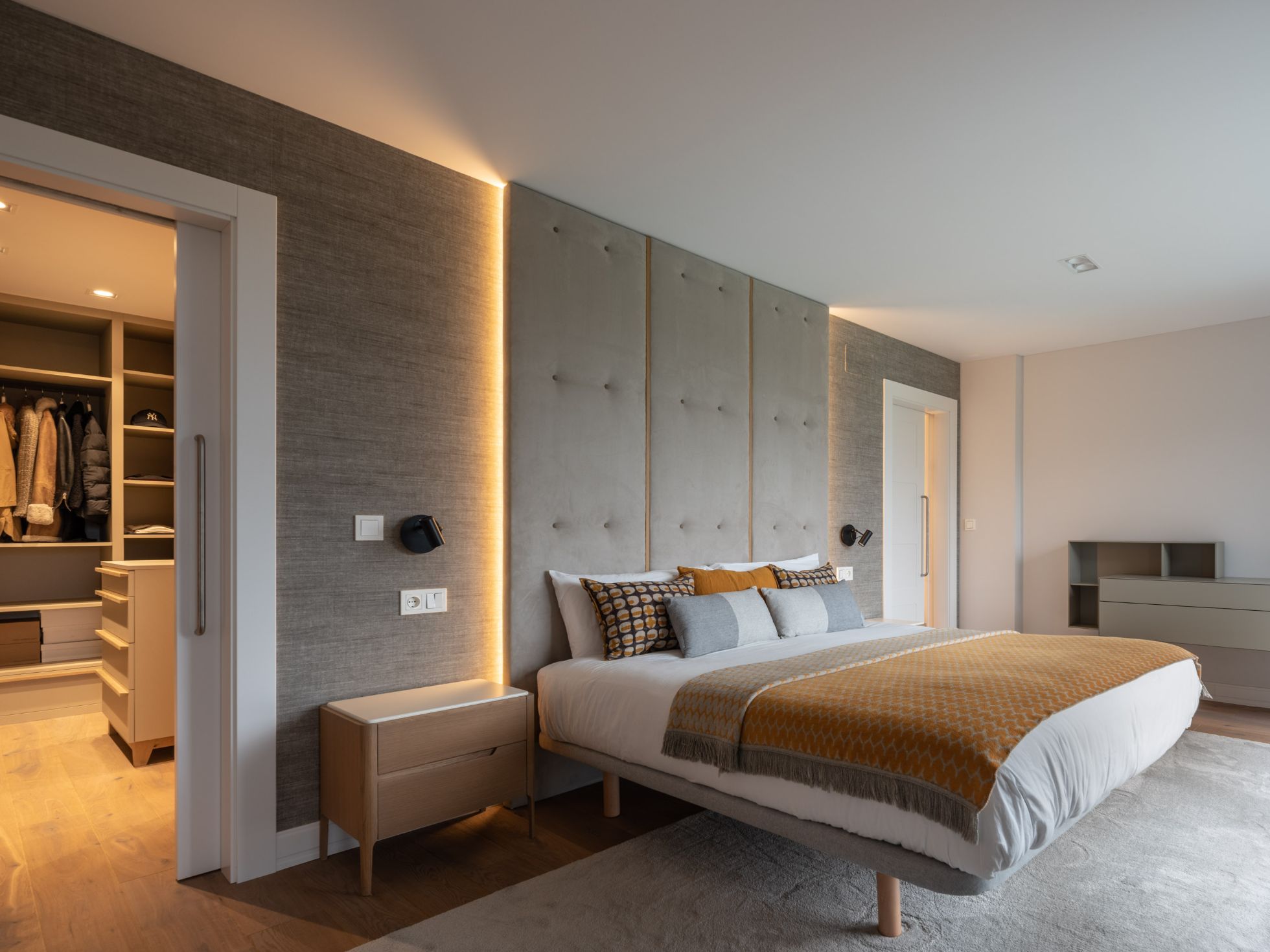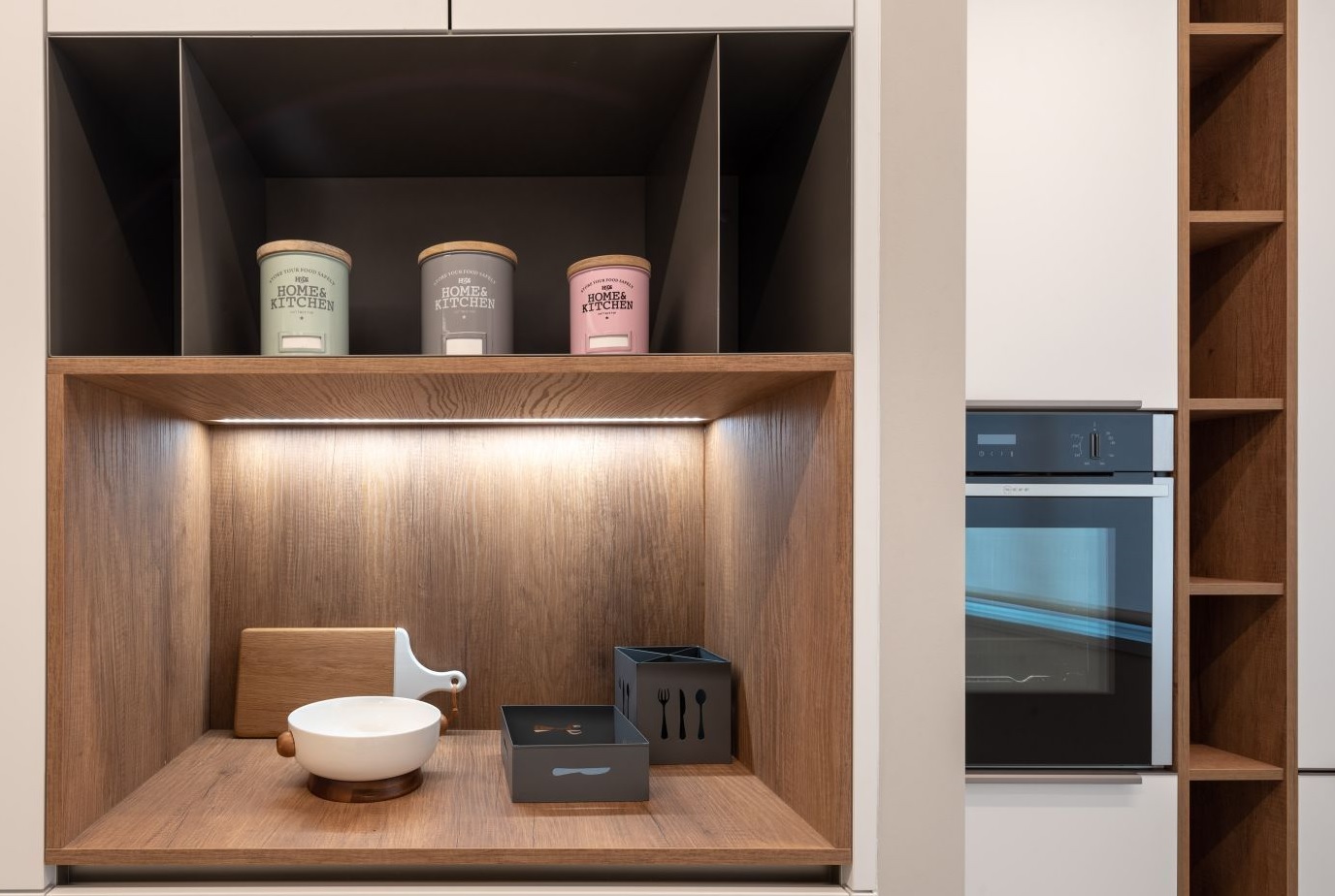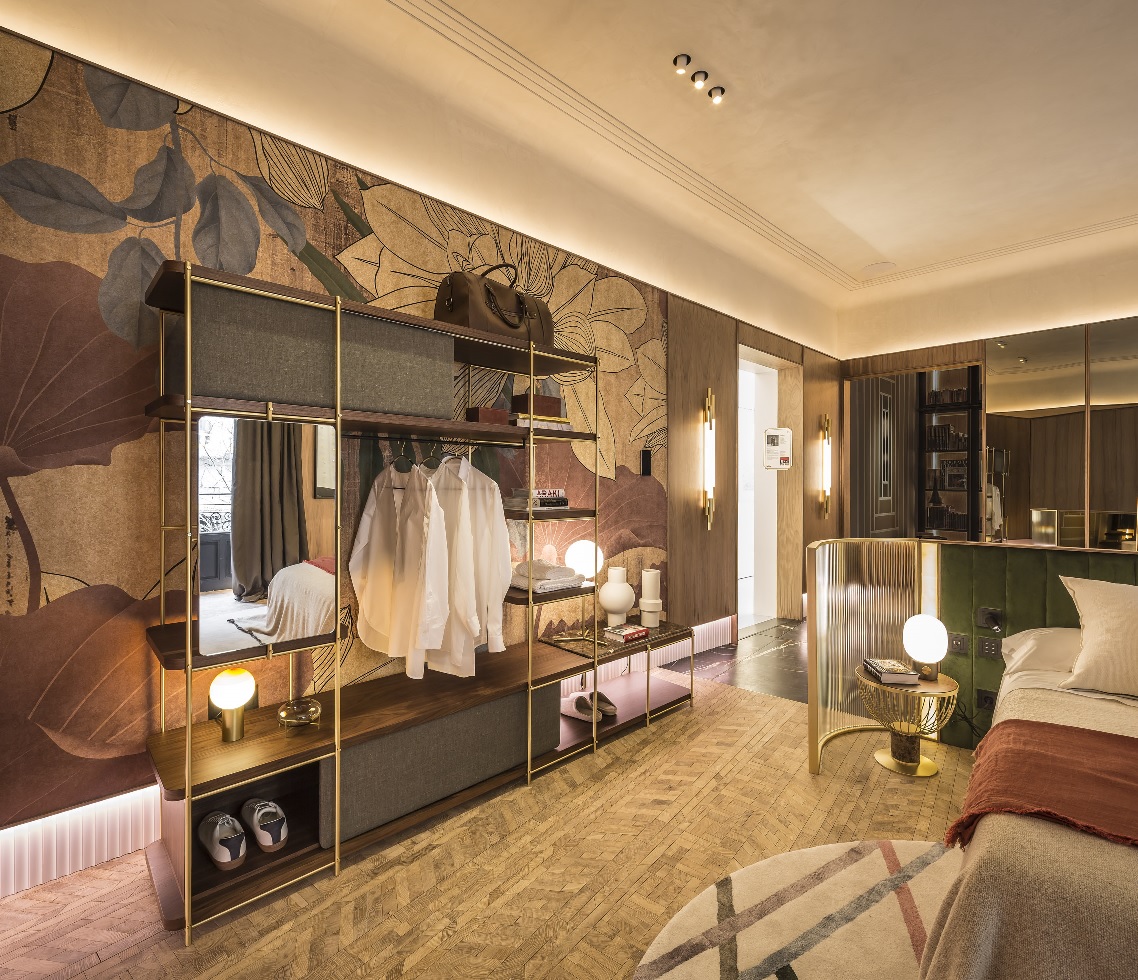BACKLIGHTING IN INTERIOR DESIGN
Play of light on our walls.
Today we are talking about indirect light, also known as backlighting in interior design. A technique that is here to stay thanks to the development and innovation that LED technology is experiencing.
When an interior designer publishes a photo of their latest work, we love to look at the details that “build” environments and that can completely change the essence of the space. If you are one of us, you will surely want to know what backlighting is.

What is backlighting?
Backlighting is based on LED lighting that, when reflected on surfaces such as the wall, floor, or ceiling, makes our perception see a continuous illumination, without reflections, glare, or shadows.
This indirect lighting is very discreet due to its small size and best of all, it does not produce heat so none of the furniture or surfaces with which it is in contact will be damaged.
Surely in some project you have noticed walls or ceilings that seem to be illuminated by invisible mechanisms. This is backlighting.
What is achieved with this effect?
Backlighting in interiors is an innovative way, not only to provide light, but also to create atmospheres and give a different touch to the space.
LED lights can change colour and intensity so that your space is no longer static and can change according to your needs at any given moment.
This technique is quite common to find in cavities in ceiling, creating a false ceiling to hide the lighting system. In this case, the light goes downwards and gives us the sensation of higher spaces. If you choose to incorporate it into mouldings, the light goes in the opposite direction, from bottom to top, and is perfect for delimiting one room and separating it from another.
Finally, this indirect lighting can be found in furniture: cupboards, sideboards, and shelves. It offers us an additional source of light without resorting to lamps or direct light objects and highlights the design of the piece in which it is incorporated.

In all cases, we gain a decorative resource that provides spaciousness to the space while fulfilling its primary function of illuminating. But backlighting provides us with much more.
As LEDs are more efficient, backlighting is a more effective way of providing light to rooms. So, we will have more light with less consumption.
On the other hand, the light is more uniform, does not produce flashes and is of higher quality than conventional bulbs, so our eyesight will suffer less.
Now that you know everything that backlighting or indirect light brings to spaces, you will surely see the interior designs of designers with different eyes, won’t you?
Image Credits:
- Gloria Sanz Interiorismo – Reforma Piso Anticuado en Lugo
- Interior Design with Momocca furniture – Momocca Projects







